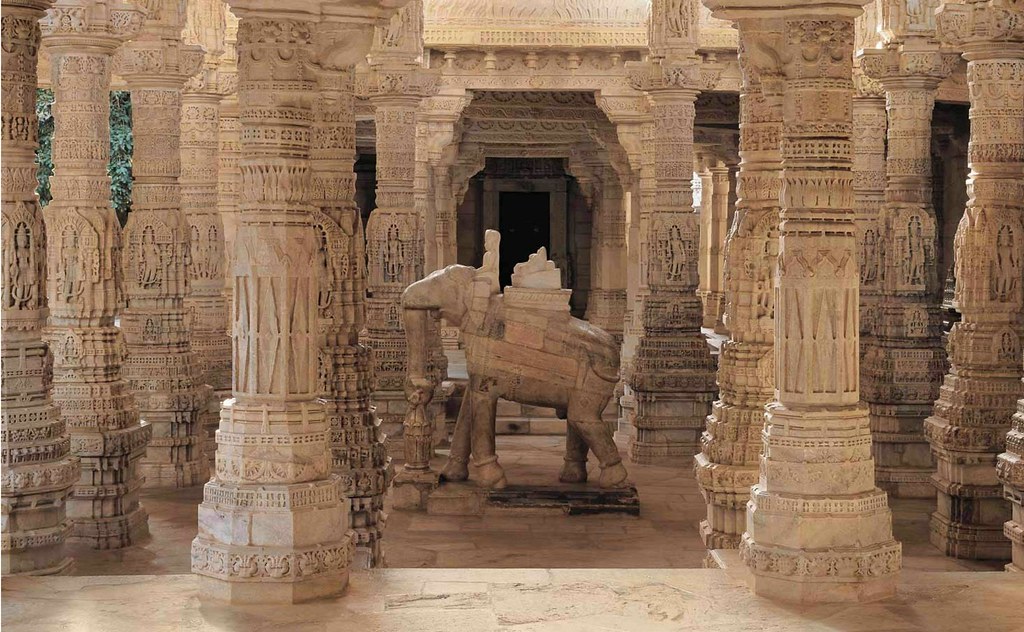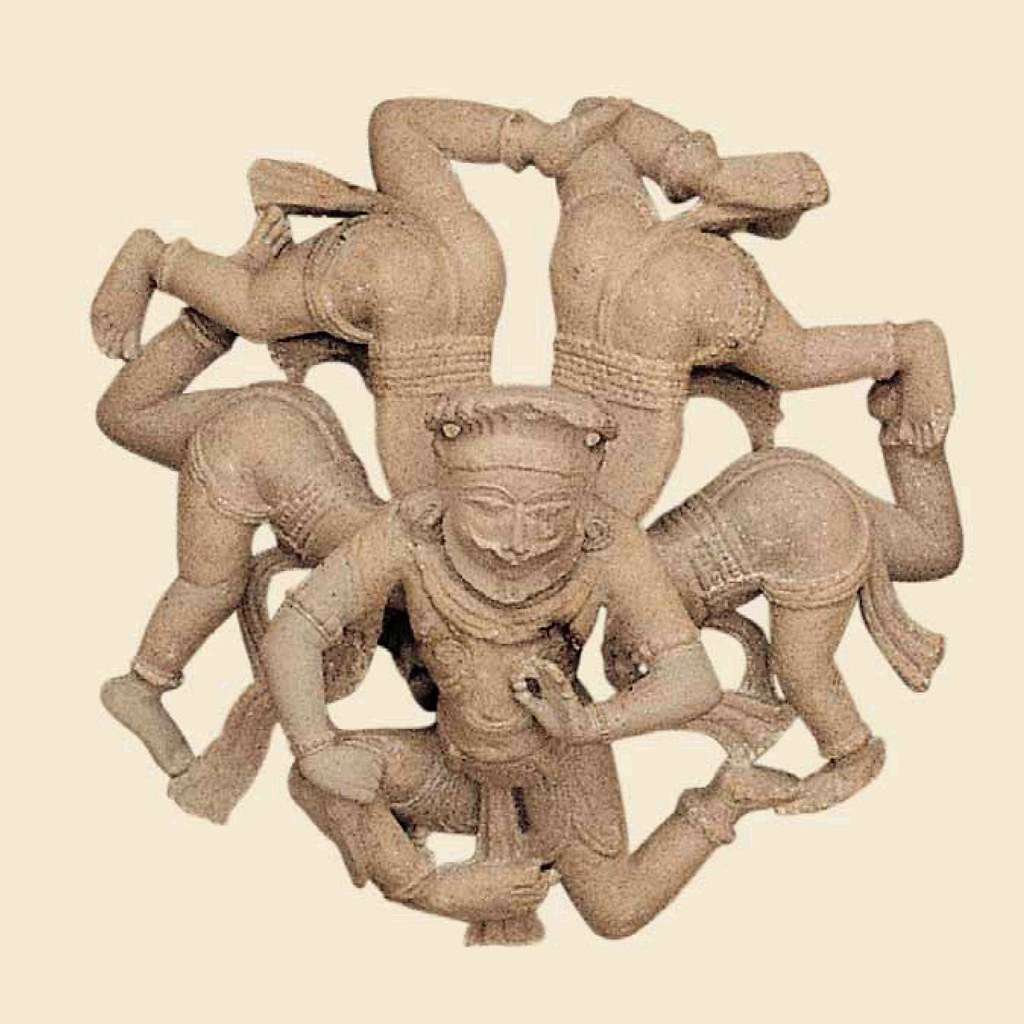 Statue of Marudevi, Adinatha's mother, riding on an elephant, in the northern meghanada-mandapa
Statue of Marudevi, Adinatha's mother, riding on an elephant, in the northern meghanada-mandapaAmong the innumerable figures, I would like to focus only on a few: semi-circular ‘carpets’ for purging the soul of hatred and anger are placed in front of thresholds embellished with apostrophic masks of demons (kirthimukhas). Besides those are the typical conches, the sound of these is regarded as holy and is similar to the syllable ‘OM’.

If one enters the temple from the western side and looks upward in the balana mandapa (the portal hall), one sees the kichaka, (photo P. 34) a figure having one head and five bodies. This represents the five elements of which the material world is composed.
 Entrance Hall (West) at the ceiling, symbolising the 5 elements: Fire - Water - Heaven (Ether) - Earth & Air
Entrance Hall (West) at the ceiling, symbolising the 5 elements: Fire - Water - Heaven (Ether) - Earth & AirThe portraits of the founder (photo on the left below) and of the architect (photo on the right below) are carved on the pillars of the western meghanada mandapa (three-storied hall, no. 4 in the plan). These portraits are almost inconspicuous; in the midst of the embellishment, together with figures of female musicians and danseuses, they do not attract any attention. Yet Dharna Shah paid attention that his portrait was carved with folded hands facing the Tirthankara paying him eternal obeisance.
In the meghanada mandapa on the northern side, there is a large marble elephant (see P. 94-95) dating back to 1687. On the back of the elephant is mounted the mahout and beside him Marudevi, the mother of Adinatha. She is said to have come to hear the sermon of her son. Legend has it that on catching sight of him while still some distance away she achieved moksha. She would thus be the first person to have escaped the cycle of birth in this current epoch of decline and evil.
 Statue of Marudevi, Adinatha's mother, riding on an elephant, in the northern meghanada-mandapa
Statue of Marudevi, Adinatha's mother, riding on an elephant, in the northern meghanada-mandapa
